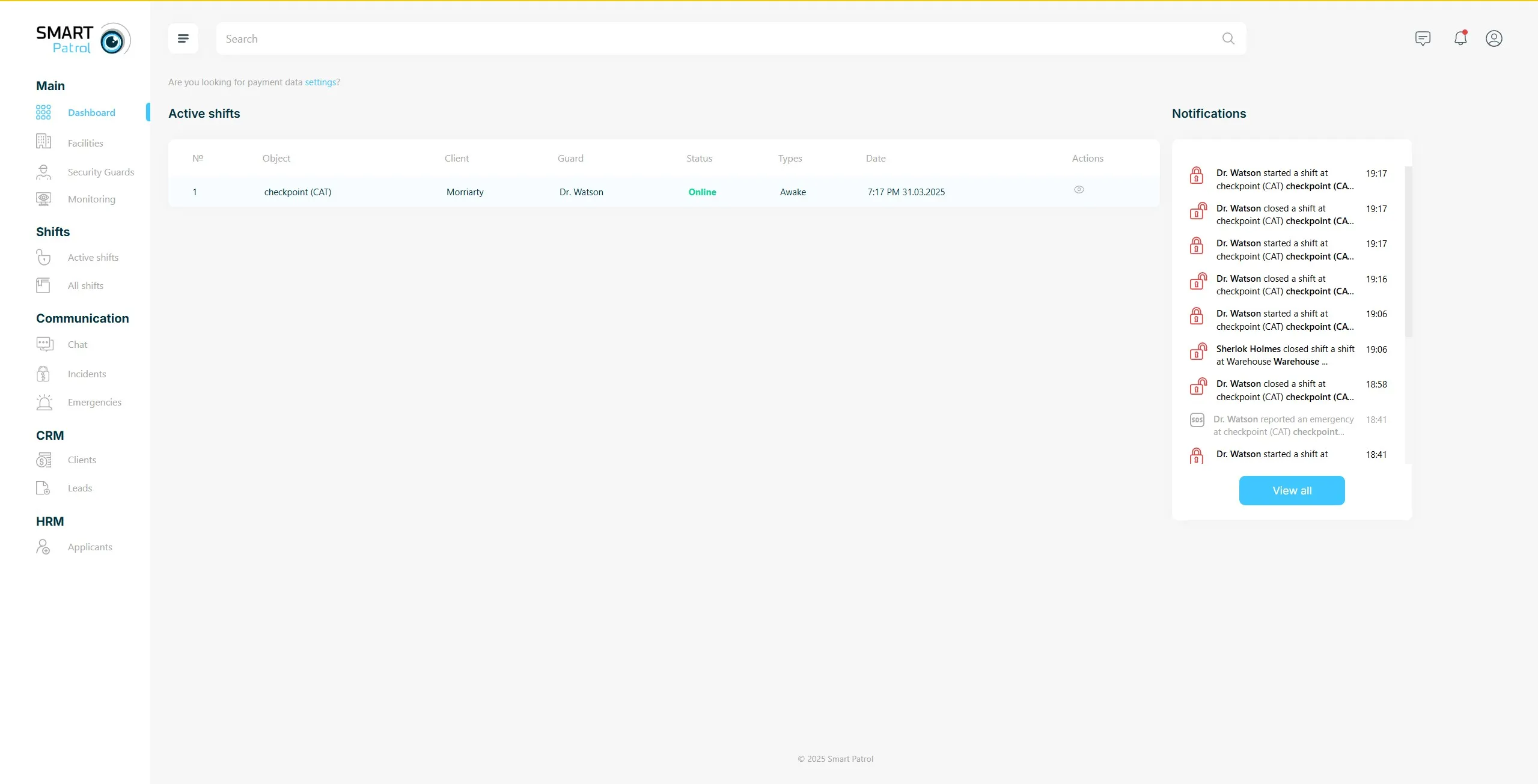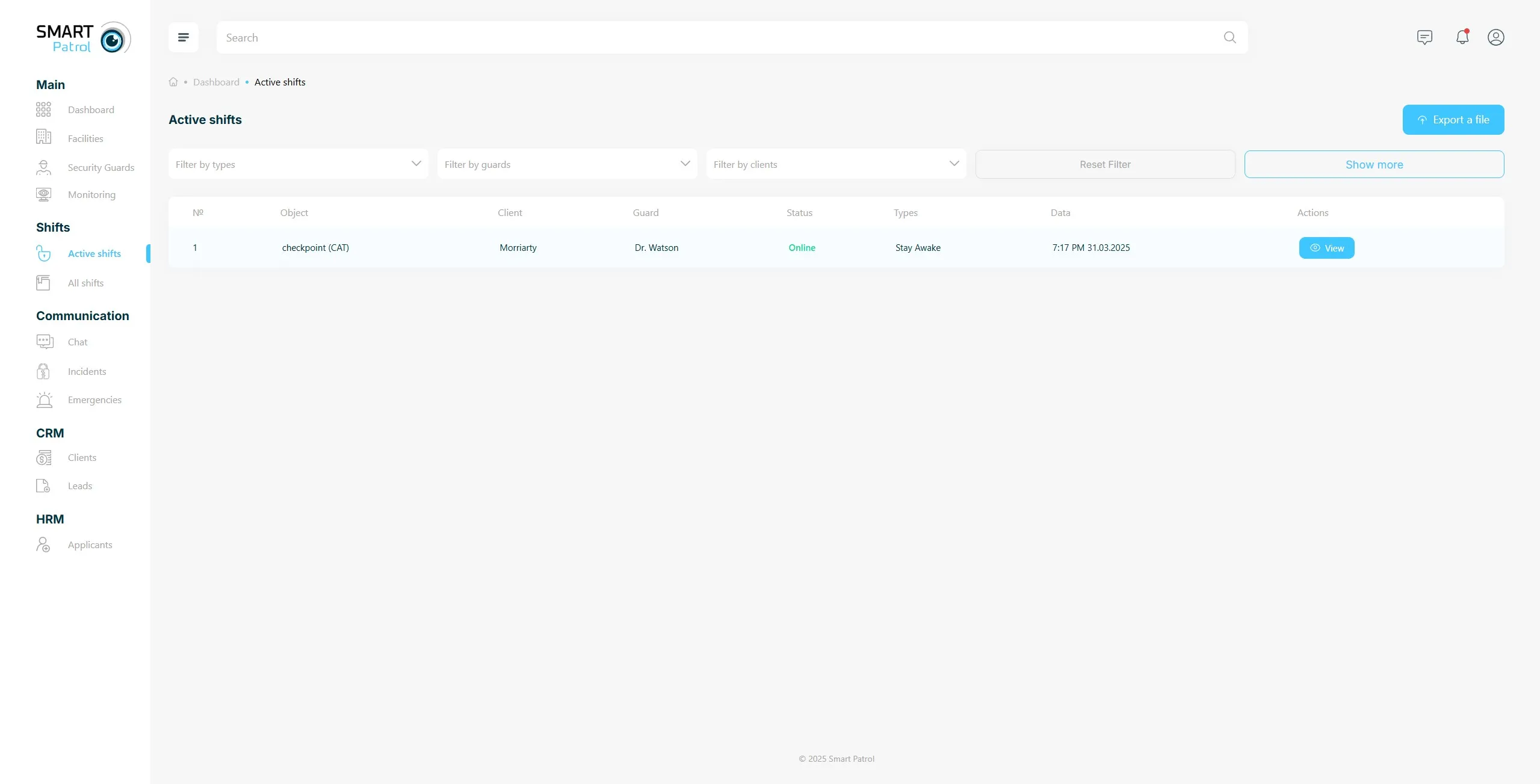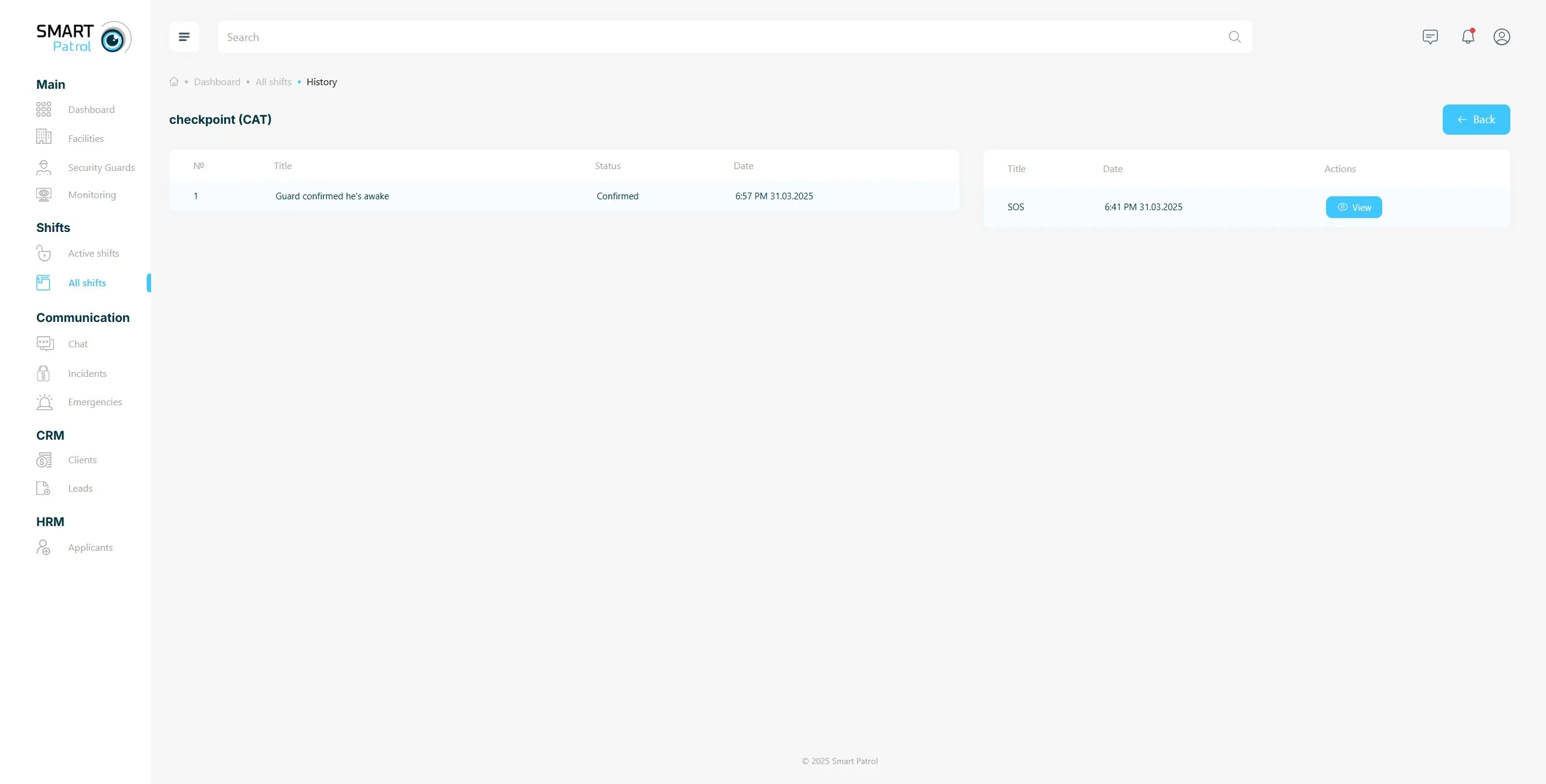Attention! Images are for informational purposes only and may differ from what appears on your screen.
Follow these steps to manage all active shifts on the Smart Patrol web platform:
1. Open the Website
- Open https://smartpatrolapp.com in your preferred web browser.
2. Log In or Create an Account
- Log in to your existing account using your credentials. If you don’t have an account yet, create a new one by following the registration process on the website.
3. Access Active Shifts
- By default, you will see a Dashboard with Active Shifts upon login, or you can click “Active Shifts” in the left sidebar menu.
- Dashboard Active Shifts displays the following parameters (Image 1):

- Serial number of active shifts
- Facility of active shifts
- Client name
- Security officer on duty
- Status of the shift (always “Online” for active shifts)
- Type of monitoring
- Date and time when the shift starts
- Action button that shows more info about the current shift (redirects to the “Active Shifts” tab).
4. Sort Active Shifts
- You can sort “Active Shifts” (Image 2) by using filter fields:

- By type - filter by type of monitoring.
- By guards - filter by security officer currently on duty.
- By clients - filter by client name.
- Reset filter button is for resetting all active filters.
- Show more button is for additional filtering fields such as:
a) Start date (format: dd-mm-yyyy)
b) End date (format: dd-mm-yyyy)
c) Sort by alphabet or from new-to-old type
d) Filter by facility.
5. View Shift Events
- The “View” button in the Active Shifts tab shows any events that occur during the selected shift, such as awake confirmations or incidents while the shift is running (Image 3).

- Note: The Dashboard Active Shifts and Active Shifts tab share the same parameters, except the “View” button feature is unique to the Active Shifts tab.
Additional Tips:
- Internet Connection: Ensure a stable connection for real-time updates on active shifts.
- Permissions: Applying filters or viewing events may require administrative access—contact support if restricted.
- Filter Usage: Use the “Show more” option for advanced filtering to manage large numbers of shifts efficiently.
